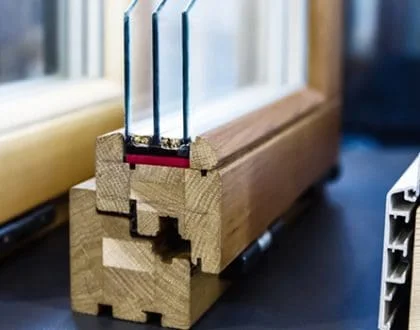Is Placing uPVC Windows in Older Buildings Wrong?

In many modern homes, uPVC will often be used in areas such as doors, cladding, plumbing, pipes and windows. While this is a great solution for recent properties, adding to the contemporary aesthetic and fitting in well with the other building materials, there is often debate over whether or not uPVC should be used in older buildings. Many historic homeowners and trusts who care for these listed buildings may turn to this solution, looking for a way to make the building warmer, to reduce noise and to make it safer for residents. However, is placing Unplasticised Polyvinyl Chloride windows in older buildings wrong?
Removing original features
Ultimately, in order to fit an older building with uPVC windows then the original windows must be replaced. This would mean removing one of the unique features that adds charm to the building. In older homes, the windows are typically designed in ways that modern windows cannot mimic, and it may mean sacrificing a wonderful decorative window for a simple, widely seen frame instead.
Reducing its value
As well as impacting on the look and feel of the building, removing its original features can also greatly reduce its value. Alongside fireplaces, beams and masonry grand oak, timber or similar windows are a part of each building’s cultural heritage, and should only be removed if absolutely necessary.
The environmental impact
Even if the aesthetic appearance of the building was not as important as the practical benefits that uPVC windows could bring, another factor to consider is the effect that this solution has on the environment. As a bi-product of the petrochemical industry, these windows are manufactured using lots of chemicals and over time, they are not biodegradable, due to keep landfills stocked in the future. When there are other harmless options available, is it right to use such a risky solution?
uPVC window alternatives
Even if you are aware of the problems that switching to uPVC windows might bring, it can be hard to find an alternative solution – one that will add sound insulation, warmth and an added element of safety to a building. However, secondary glazing is the perfect alterative to unsightly uPVC windows. These windows are fitted on the wall next to the original window frame, adding an additional level of glazing without damaging the historic window.
Here at Clearview Secondary Glazing, we specialise in fitting heritage and listed buildings with this innovative glazing solution. Learn more about our approach online.

Discover How To Stop Draughts for Good And Save On Your Energy Bills
This free eGuide – written by specialists – explains in simple terms how to improve the thermal efficiency of your windows by more than 60% and how you can reduce your yearly heating bill by 15%.
Simply enter your name and email below and we will send a free copy straight to your inbox.
Recommended Posts

Noise Reduction Case Study
14/09/2017

 10 Year Guarantee
10 Year Guarantee 5 Star Customer Reviews
5 Star Customer Reviews
